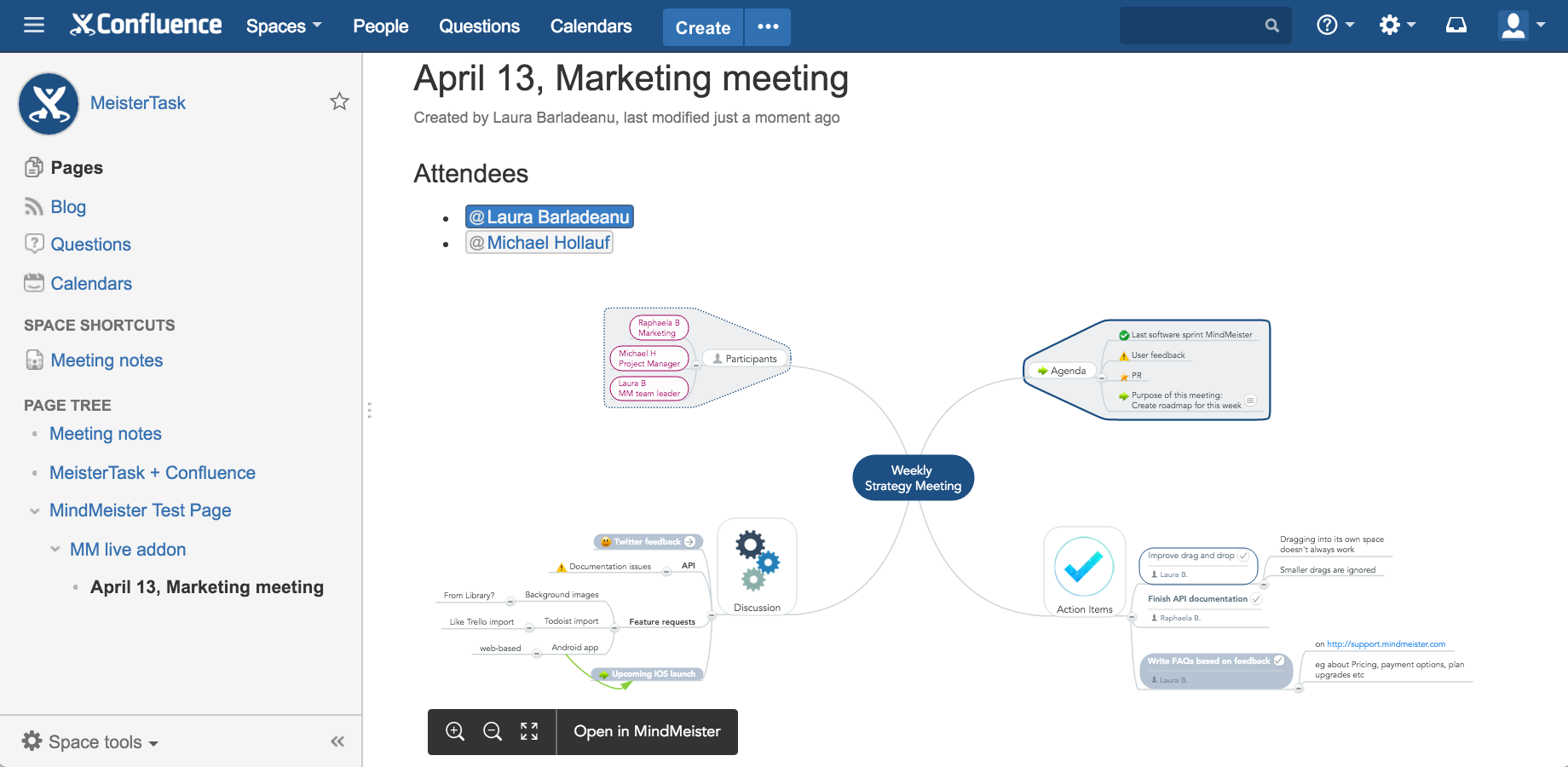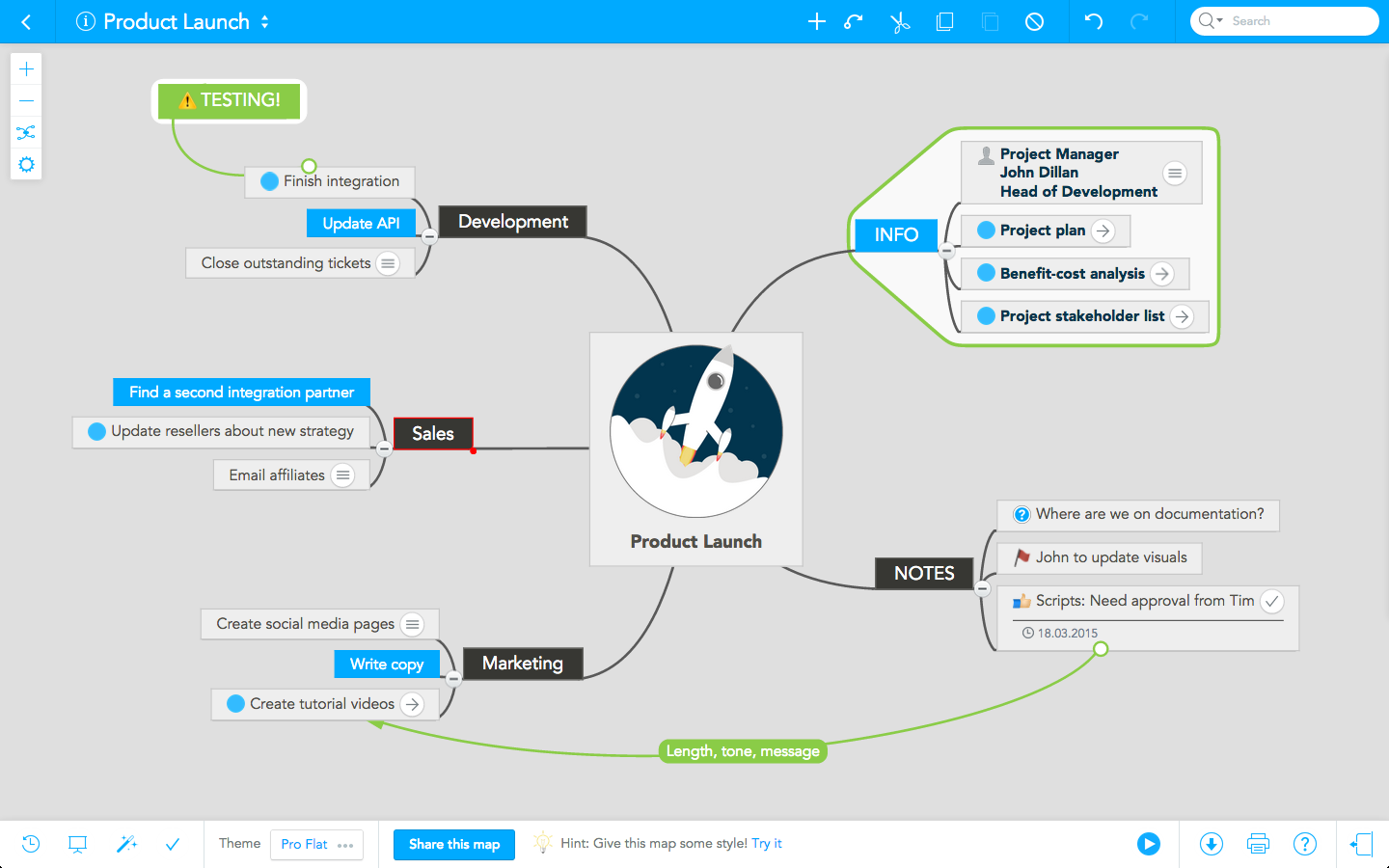Try using mind maps to plan your next project
Mind maps are a great way for visual learners and thinkers to brainstorm ideas, plan out projects, and tap into the creativity of the team. Plus, they’re collaborative. You can work through ideas and problems together, going from initial ideas to formalized plan as a team. If you’ve felt frustrated at the start of a project, you gotta check out these 3 ways you can use mind maps in Confluence to go from concept to solid project plan.
How do you typically start your planning process for a new project? If it entails drawing straws for who has to write on the whiteboard, this post will help.
Let’s start by stating the obvious: planning and managing a project is difficult. Too often, after loads of meetings and conversations you’re left with scattered notes, whiteboard photos, email threads, Post-its on your monitor – and no solid plan. Been there, done that?
How mind maps can help jumpstart your projects
What if you could start the whole process in a faster, more creative, and engaging way?
That’s where mind maps come in. Mind maps are a visual way to organize information. They start with a central concept or topic, then related ideas are added, building on that concept. See below.
Mind maps are a great way for visual learners and thinkers to brainstorm ideas, plan out projects, and tap into the creativity of the team. But they’re not just for visual folks, everyone on the team can benefit from using this technique. More than anything, they make it super easy to capture information that too often gets lost – in your head and in the heads of your teammates, in notebooks, in hallway conversations – where it has no context.
Mind maps meet Confluence
And here’s another aspect of mind maps that makes them special: they’re collaborative. You can work through ideas and problems together, going from initial ideas to formalized plan… as a team. This becomes even more useful when you can reference these plans in context with your other project planning work. MindMeister Mind Maps make it easy to embed, edit, and publish mind maps directly in Confluence pages, where they live alongside the rest of your project content.
3 ways you can use mind maps in Confluence
1. Brainstorm ideas
Start with your central project idea. If you’re a development team, maybe it’s a new feature you’re spec’ing out. For marketing, it could be your next event or creative campaign. Create a brainstorming page and use a mind map to explore requirements, concepts, and risks associated with the new feature. Someone miss the brainstorm? They have access to all the team’s thinking and where it stemmed from in one place. They’ll thank you when they have a visual diagram to check out instead of your scribbled notes.
Diamond startup, Rare Carat, uses MindMeister in the definition and ideation phase of all their projects. Tech-lead, Martim Schnack explains: “MindMeister is a great way to visualize our thoughts, ideas, and priorities. We usually have one branch in the mind map that functions like an idea inbox, while another branch is used to create tasks with due dates, which can then be assigned to the team members responsible. MindMeister is thus both a planning and a task management tool for us.” Read more.
2. Visualize meeting notes
You’ll have a lot of meetings as you begin fine tuning your project scope. Mind maps can help you stay focused on what’s important by highlighting key points instead of taking detailed notes. It also makes it easy to group related things like action items and discussion points that need follow-up.
Eugen Dragomir, founder of the Romanian consultancy LearningManager says: “Mind maps provide us with a clear overview of our goals, objectives, issues, and action items. During project retrospective meetings, we use maps to visualize issues as well as successes, and to take notes during our subsequent discussion.” Read more.
3. Plan out your project
Map out key contributors, outcomes, resources needed, and scope of work. Piecing together your project becomes much easier as you visually match contributors to requirements, and outcomes to needed resources. The added benefit of using MindMeister for project planning is you can also assign items to team members within the same workflow.
Thomas De Vos, founder of UK-based company IT Enterprise, explains how his team uses MindMeister to accurately understand their clients’ visions and create project plans:
“First, using MindMeister in person or over Skype, we establish what the client’s key requirements would be. Having these requirements displayed in a visual way immediately demonstrates the complexity of the project to both us and the client. Linking different sections of the mind map allows the team to visualize interactions between different project areas, while defining the client’s user story and how we will go about achieving it.” Read more.
Start using mind maps in Confluence today!
To get started with using mind maps in Confluence, download the MindMeister Mind Maps add-on available for Confluence Cloud.
Try using MindMeister Mind Maps




